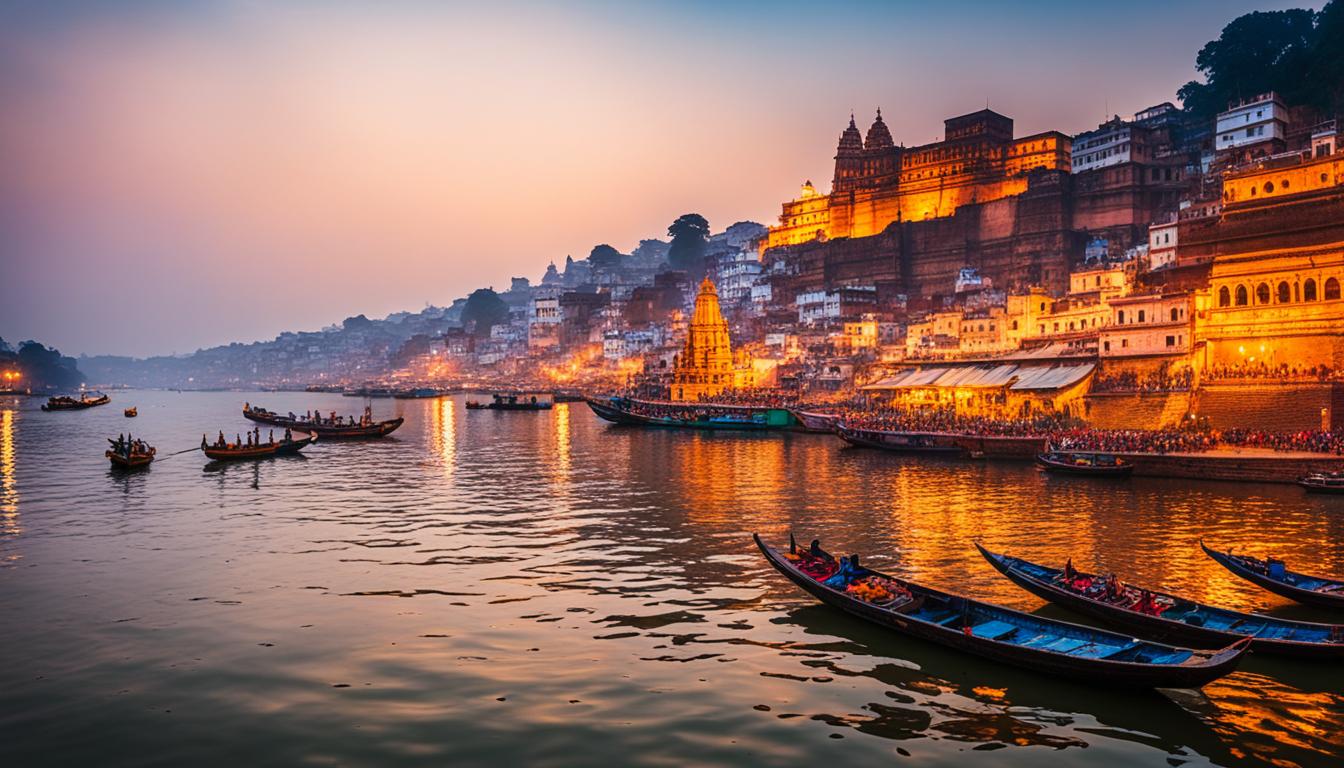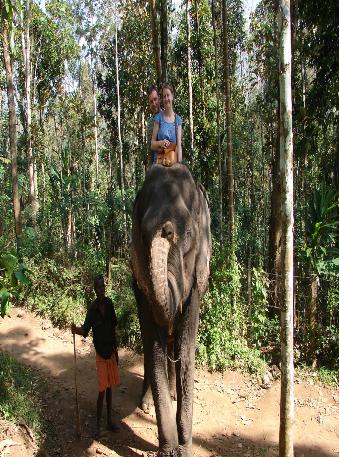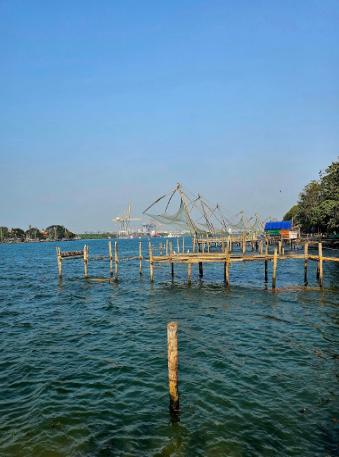What to See in Varanasi
Author: Pratheesh ThomasDate: 25 Sep, 2025City: India
Varanasi, often known as the spiritual capital of India, is a city unlike any other. With a history that spans over 3,000 years, it is regarded as one of the oldest continuously inhabited cities globally. Known by various names, Kashi, Benares, and Varanasi, this sacred city occupies a special place in the hearts of countless pilgrims, travelers, and seekers who arrive here in pursuit of spiritual connection, cultural depth, and enduring tradition. Recognized as one of the top 10 tourist destinations in India, Varanasi offers a truly immersive experience where ancient rituals, vibrant street life, and centuries-old heritage coexist in perfect harmony.
Situated along the banks of the River Ganges, Varanasi is intricately linked with the cycles of life and death. The city’s ghats (riverfront steps), temples, and narrow winding streets resonate with ancient chants, the scent of incense, and the profound faith of its inhabitants. To stroll through Varanasi is to traverse a living, breathing museum of India’s spiritual and cultural heritage.
However, Varanasi is not solely about religion—it is a destination that caters to all. From witnessing the breathtaking Ganga Aarti at Dashashwamedh Ghat to experiencing the spiritual tranquility of Sarnath, from visiting the revered Kashi Vishwanath Temple to exploring the historic Ramnagar Fort, the city offers a fusion of the sacred, the historical, and the deeply human. If you're planning a visit, here are the top attractions you must see in this timeless city.
Ghats of Varanasi
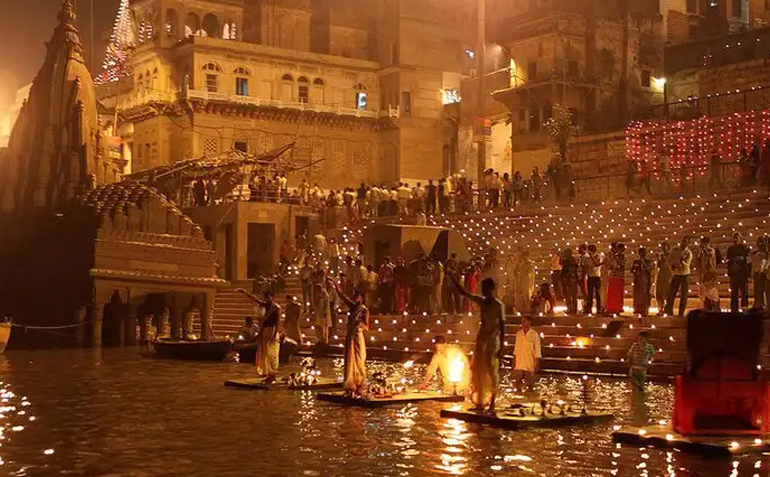
The Ghats of Varanasi are more than mere architectural features; they embody the essence of the city. These expansive, broad steps that line the western bank of the River Ganges act as sacred areas where the spiritual and physical realms converge. With over 80 ghats, each possessing its unique history, rituals, and significance, they together constitute the core of Varanasi’s cultural and religious existence.
For centuries, devotees have traveled to these ghats to engage in ritual baths, convinced that immersing themselves in the holy Ganges purges sins and facilitates spiritual liberation (moksha). Both locals and tourists gather to meditate, offer prayers, and participate in daily religious observances. The ghats also serve as venues for celebration hosting festivals, music, and even yoga sessions—while simultaneously being sites of solemn farewells, where last rites are conducted with profound respect.
Among the most significant:
Dashashwamedh Ghat is renowned for its vibrancy and is one of the most frequented locations. According to local legend, Lord Brahma conducted a sacrifice involving ten horses at this site. In contemporary times, it is celebrated for the Ganga Aarti, a captivating ritual that occurs every evening at dusk. Priests, adorned in traditional garments, engage in synchronized performances with fire lamps, conch shells, and chants, attracting large audiences each night.
Manikarnika Ghat, recognized as one of the oldest and holiest sites, functions as the main cremation ghat. It is believed that individuals cremated here achieve moksha, thereby breaking free from the cycle of rebirth. The flames at this ghat burn continuously, day and night, and while the experience may be overwhelming for some, it provides deep insights into Hindu philosophies regarding life, death, and liberation.
Assi Ghat, situated at the southern edge of the city, is particularly popular among students, travelers, and artists. This ghat offers a more tranquil atmosphere where visitors can partake in boat rides, practice early morning yoga, or simply observe the unfolding life along the river.
A stroll along the ghats particularly at dawn represents one of the most captivating experiences that Varanasi provides. The golden rays of the morning sun shimmer on the river as the sounds of temple bells, sacred chants, and the soft whisper of prayers permeate the atmosphere. Small boats drift by, carrying both devotees and photographers, while priests conduct rituals that have been upheld for generations.
In Varanasi, the ghats transcend mere locations; they embody a vibrant symbol of the city’s everlasting bond with the divine, a space where time appears to halt, and the sacred is perpetually within reach.
Kashi Vishwanath Temple
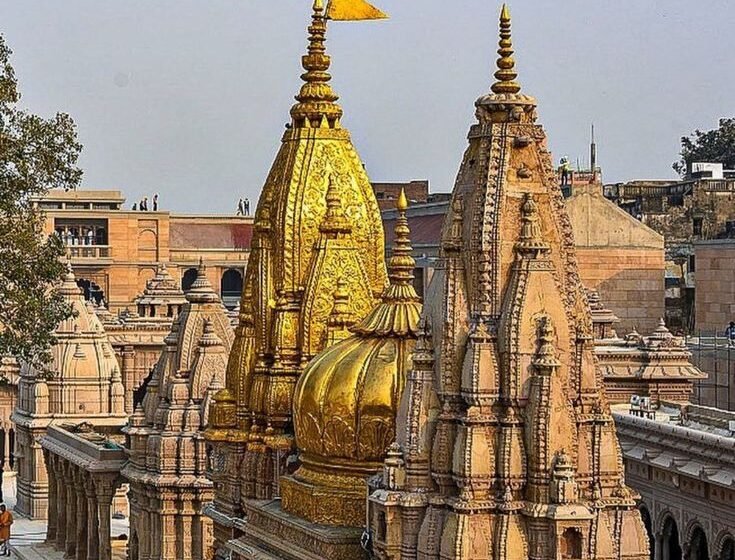
The Kashi Vishwanath Temple stands as one of the most esteemed and sacred temples in India, dedicated to Lord Shiva, the paramount deity in the Shaivite tradition of Hinduism. Situated in the center of Varanasi, this temple serves not only as a significant religious site but also as a representation of resilience, faith, and enduring devotion.
One of the 12 Jyotirlingas
Kashi Vishwanath is recognized as one of the twelve Jyotirlingas, which are regarded as the most sacred Shiva temples throughout India. According to Hindu beliefs, a visit to a Jyotirlinga bestows spiritual merit and liberation. The temple’s presiding deity, Vishwanath, which translates to "Lord of the Universe," is thought to be the guardian and sovereign of the city, which is why Varanasi is frequently referred to as Kashi, the city of light and divine energy.
Historical and Cultural Significance
The original temple is believed to have been in existence for thousands of years; however, it has faced destruction and reconstruction multiple times due to invasions and political upheaval. The current edifice was constructed in 1780 by Ahilyabai Holkar, the queen of Indore. In spite of its tumultuous history, the temple has persisted as a symbol of Hindu faith and continues to attract millions of pilgrims and tourists annually.
In recent years, the Kashi Vishwanath Corridor Project has revitalized the area surrounding the temple, enhancing access and amenities for visitors. This new initiative directly links the temple to the Ganga River, offering a magnificent spiritual experience that harmonizes tradition with contemporary infrastructure. Essentially, the Kashi Vishwanath Temple serves not merely as a site of worship it stands as the spiritual heart of Varanasi and is an essential destination for those wishing to grasp the city's sacred nature. Regardless of whether you are a devout follower or an inquisitive visitor, the temple provides a deep experience of India's spiritual heritage and lasting devotion.
Sarnath
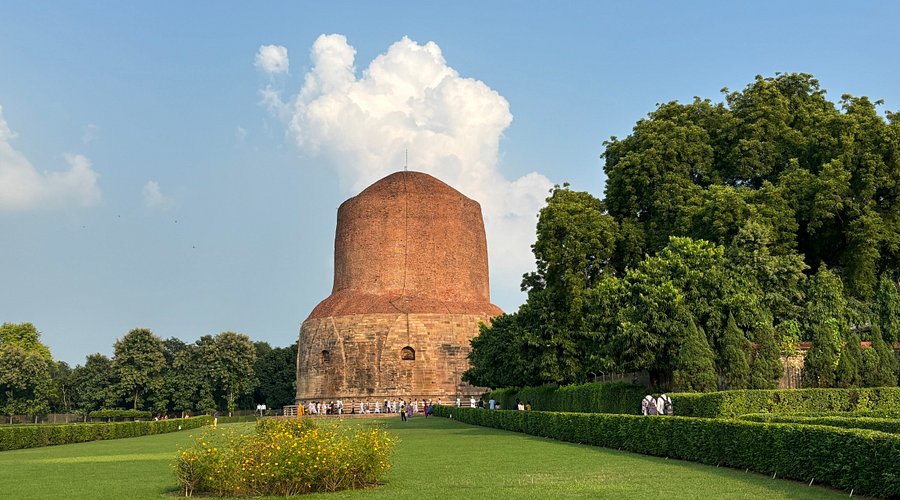
Situated approximately 10 kilometers from the center of Varanasi, Sarnath is one of the most important and esteemed locations in the annals of Buddhism. It is the site where Gautama Buddha delivered his inaugural sermon following his enlightenment in Bodh Gaya, thus establishing it as one of the four principal Buddhist pilgrimage destinations (alongside Lumbini, Bodh Gaya, and Kushinagar).
Around 528 BCE, the Buddha came to Sarnath to reunite with his five former companions, and it was here, in the Deer Park (Isipatana), that he presented his first teaching on the Dhamma (Dharma)—the "Wheel of Law" (Dhammacakkappavattana Sutta). This sermon represented the foundational moment of the Buddhist Sangha, or community of monks, and set the groundwork for what would evolve into a significant global religion.
As a result, Sarnath possesses profound spiritual and historical significance not only for Buddhists but also for anyone with an interest in world heritage and the evolution of philosophical thought.
For those interested in exploring the roots of Buddhism and ancient Indian history, there's much to discover in what to see in Sarnath, from the towering Dhamek Stupa and the historic Ashoka Pillar to the peaceful Deer Park and the rich collections of the Sarnath Archaeological Museum. Each site offers a unique glimpse into the teachings and legacy of the Buddha.
Spiritual Atmosphere
Sarnath possesses a tranquil and contemplative ambiance. Devotees from around the globe, particularly from Sri Lanka, Thailand, Japan, Tibet, and Myanmar, arrive to honor their beliefs, recite sutras, or simply engage in quiet contemplation. Numerous nations have also established Buddhist monasteries and temples reflecting their unique architectural styles, contributing to the area's diverse and spiritual essence.
Why Visit Sarnath?
-
To observe the roots of Buddhism and discover the location where the Buddha imparted his initial teachings.
-
To enjoy a serene escape from the bustling environment of Varanasi.
-
To admire ancient structures and Buddhist artwork that have endured through the ages.
-
To connect with a site that is sacred, historic, and profoundly philosophical.
Ramnagar Fort
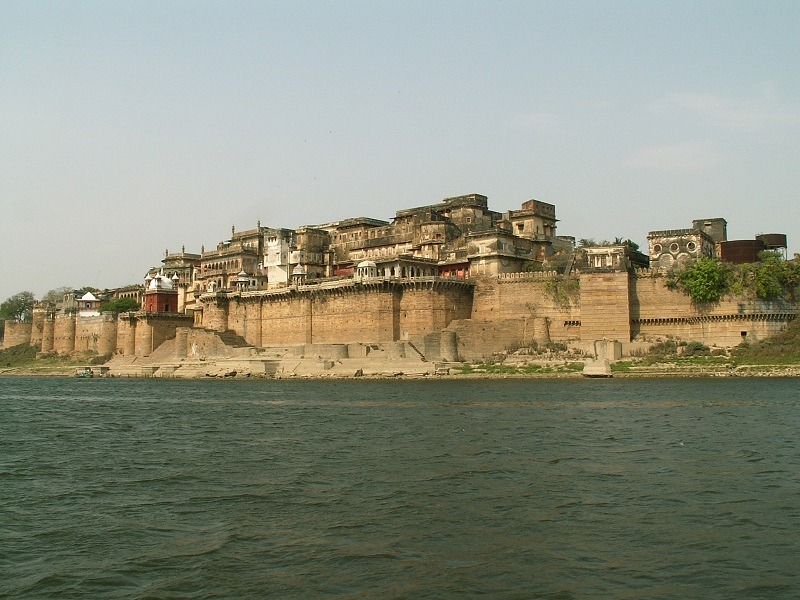
Situated on the eastern shore of the River Ganges, directly across from the ghats of Varanasi, the Ramnagar Fort presents a remarkable contrast to the spiritual ambiance of the city. Constructed in the 18th century by Kashi Naresh Raja Balwant Singh, this substantial sandstone fort functioned as the royal residence for the Maharaja of Banaras (Kashi Naresh) and continues to represent Varanasi’s royal legacy.
Architecture and Layout
The fort is designed in the traditional Mughal architectural style, featuring elaborate balconies, intricately carved archways, and spacious courtyards. While it may not be as opulent as some Indian palaces, its magnificence is found in its historical authenticity and its picturesque setting along the river. The fort's aged walls and vintage allure create a stunning scene, particularly at sunset when the golden rays illuminate the Ganges.
Museum and Collections
Within the fort lies a museum, referred to as the Saraswati Bhawan, showcasing an intriguing assortment of royal artifacts. The exhibits feature:
-
Classic automobiles and royal palanquins
-
Historical weapons, swords, and armor
-
Vintage clocks, manuscripts, and traditional costumes
-
A unique astrological clock that indicates not only the time but also the positions of the moon and sun
The museum offers visitors a glimpse into the luxurious lifestyle of Varanasi's former rulers and the cultural heritage of the area.
Cultural Importance
Ramnagar Fort is more than merely a historical site; it continues to be culturally vibrant. The Kashi Naresh, regarded as a spiritual leader by the local community, still lives in a part of the fort. Annually, the fort transforms into the hub of celebrations during Ram Lila, a month-long theatrical representation of the Ramayana that culminates with Dussehra. This age-old performance, conducted in the expansive grounds surrounding the fort, attracts thousands of viewers and is recognized as one of the most ancient and intricate Ram Lila festivities in India.
Conclusion
In Varanasi, time appears to decelerate as the timeless rhythms of faith, tradition, and culture reveal themselves along the banks of the Ganges. This city is one where each ghat tells a tale, every temple resonates with chants, and each breeze carries the wisdom of ages. Whether you are observing the flames of the Ganga Aarti flicker in the night, standing in serene reverence at Kashi Vishwanath Temple, following the footsteps of the Buddha in Sarnath, or wandering through the majestic halls of Ramnagar Fort, Varanasi provides more than mere sights it offers a profound journey into the essence of India.
FAQs—Frequently Asked Questions
1. What should I see in Varanasi?
Ganga Aarti – Evening ritual at Dashashwamedh Ghat
Manikarnika Ghat – Sacred cremation site
Kashi Vishwanath Temple – Famous Shiva temple
Banarasi Silk – Traditional silk weaving
BHU & Museum – University and art museum
Sarnath – Buddha’s first sermon site
2. What is Varanasi famous for?
Varanasi is famous for its spiritual significance, ancient temples, and the sacred Ganges River.
It's known as one of the oldest living cities in the world and a major center for Hindu rituals.
Also famous for Ganga Aarti, cremation ghats, Banarasi silk sarees, and street food.
3. Is Ganga Aarti done every day in Varanasi?
Yes, Ganga Aarti is performed every day in Varanasi.
It takes place every evening at Dashashwamedh Ghat, starting around 6:30–7:00 PM
4. Can we touch jyotirlinga in Kashi?
No, you cannot touch the Jyotirlinga at Kashi Vishwanath Temple.
Due to security and crowd control, the original Shivling is visible but kept behind barricades, and darshan is done from a distance.
5. Which ghat is best in Varanasi?
The best ghat in Varanasi is Dashashwamedh Ghat.
It’s the most vibrant, centrally located, and famous for the Ganga Aarti every evening.

